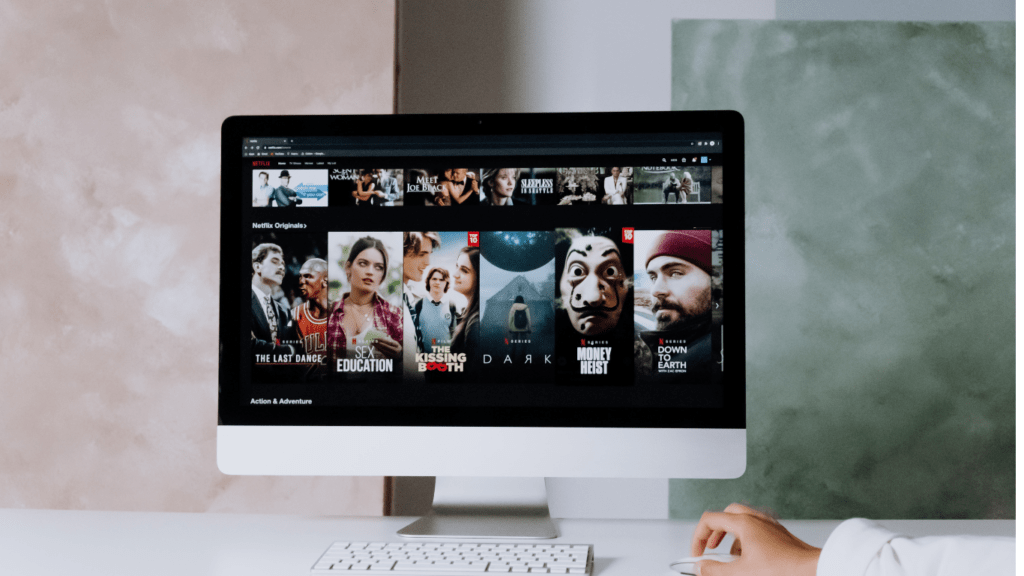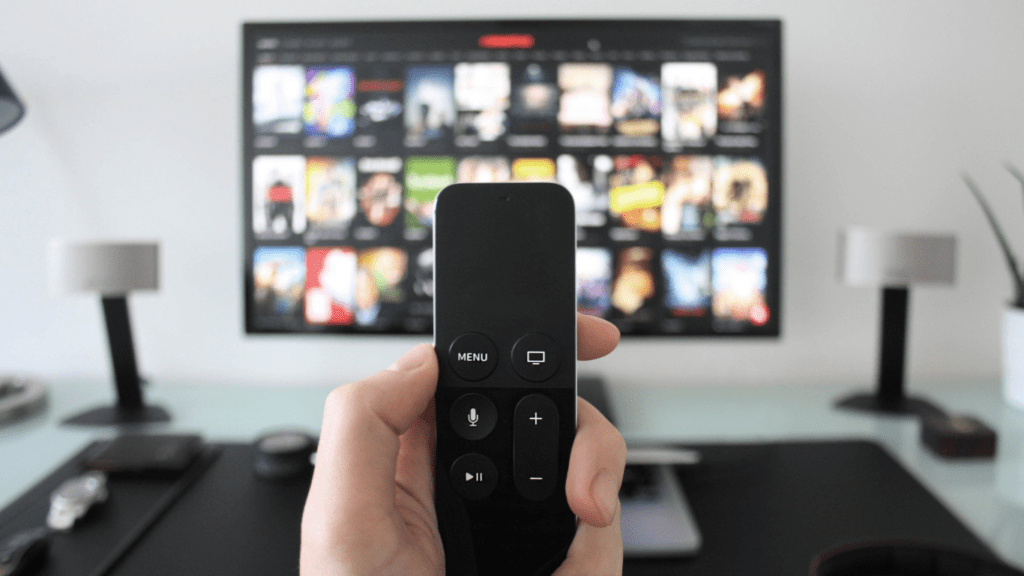Understanding the Streaming Wars
What Are the Streaming Wars?
The streaming wars refer to the intense competition among various streaming service providers.
These companies, which include leaders like Netflix and Disney+, vie for subscriber attention by offering exclusive content, innovative features, and competitive pricing.
The digital landscape has transformed entertainment consumption, leading to a battle for market dominance across different demographics, preferences, and geographic regions.
Key Players in the Market
Several key players dominate the streaming market.
Netflix, Disney+, HBO Max, Amazon Prime Video, and Hulu are among the most influential.
Each service carves its niche with unique content libraries.
- Netflix offers a broad mix of original series (e.g., “Stranger Things” and “The Crown”), movies, and documentaries.
- Disney+ focuses on family-friendly content, including Disney classics, Marvel movies, and “The Mandalorian.”
- HBO Max combines HBO’s premium shows (e.g., “Game of Thrones” and “Westworld”) with WarnerMedia’s extensive catalog, including Warner Bros. films and DC series.
- Amazon Prime Video offers its originals (e.g., “The Marvelous Mrs. Maisel”) and a variety of licensed movies and shows. Hulu stands out with its focus on next-day TV streaming and exclusive series like “The Handmaid’s Tale.”
Understanding these key players helps identify the most suitable service based on content preferences and viewing habits.
Factors to Consider When Choosing a Streaming Service
Content Variety and Exclusive Titles
Content variety significantly impacts a streaming service’s value like:
- Netflix, for example, boasts a mix of original series like “Stranger Things” and movies such as “The Irishman.”
- Disney+ provides exclusive access to franchises like Marvel and Star Wars. HBO Max integrates premium shows like “Game of Thrones” with WarnerMedia’s extensive catalog.
- Amazon Prime Video offers a blend of originals like “The Marvelous Mrs. Maisel” and high-quality licensed content.
- Hulu focuses on next-day TV streaming, making it ideal for catching up on recently aired shows.
By comparing these exclusive titles, you can align your choice with your preferences.
Pricing and Subscription Models
Pricing models vary considerably across streaming services.
Netflix offers three tiers:
- Basic
- Standard
- Premium
with prices ranging from $8.99 to $17.99. Disney+ charges $7.99 monthly, with an annual plan available for $79.99. HBO Max costs $14.99 per month without ads.
Amazon Prime Video subscription is included with an Amazon Prime membership at $12.99 per month or $119 annually.
Hulu provides several options: $5.99 monthly with ads, $11.99 without ads, and a live TV bundle starting at $64.99.
Consider your budget and desired features before committing to a plan.
User Interface and Accessibility
User interface plays a crucial role in user experience. Netflix’s interface offers personalized recommendations and easy navigation through genres and categories.
Disney+ features a user-friendly design with dedicated sections for its major franchises.
HBO Max includes curated hubs for different content types and an intuitive layout.
Amazon Prime Video’s interface integrates with existing Amazon accounts, simplifying access but can feel cluttered.
Hulu excels in providing recent TV episodes with a streamlined browsing experience.
Evaluate each service’s design, usability, and device compatibility to ensure seamless access across your preferred devices.
By evaluating content variety, pricing models, and user interface, you can better navigate the Streaming Wars and choose the service that best matches your needs.
Comparing Popular Streaming Services

1. Netflix
Netflix, established in 1997, is a pioneer in streaming media.
It offers an extensive library of movies, TV shows, and original content. Subscribers gain access to critically acclaimed series like “Stranger Things” and “The Crown.”
Netflix provides various membership plans. The Basic plan costs $9.99 per month, while the Standard and Premium plans cost $15.49 and $19.99 per month, respectively, providing HD and UHD video quality as options.
Machine learning algorithms recommend content based on viewing history, making it easier for users to discover new shows.
2. Amazon Prime Video
Amazon Prime Video is a part of the Amazon Prime subscription. It includes numerous originals like “The Marvelous Mrs. Maisel” and “The Boys.”
Members benefit from licensed content and movies available for rental or purchase.
The Amazon Prime subscription is $14.99 per month or $139 per year, encompassing free shipping and other Amazon services.
The platform supports 4K UHD and HDR formats. Amazon leverages its robust recommendation engine to suggest content tailored to user preferences.
3. Disney+
Disney+ targets families and fans of Disney properties. Subscribers can enjoy classics and new releases from Disney, Pixar, Marvel, Star Wars, and National Geographic.
The platform hosts exclusive series like “The Mandalorian” and “WandaVision.” Disney+ offers a straightforward pricing model at $7.99 per month or $79.99 per year.
Additionally, a bundle with Hulu and ESPN+ costs $13.99 per month. The user-friendly interface helps navigate the extensive catalog with ease.
4. Hulu
Hulu emphasizes current TV episodes, often available the day after airing.
It also has original content such as “The Handmaid’s Tale” and “Castle Rock.” Subscription options include an ad-supported plan at $6.99 per month and an ad-free plan at $12.99 per month.
Hulu Live TV expands the service with live sports, news, and events for $69.99 per month.
Its vast library is complemented by add-ons like HBO Max, Showtime, and Starz for additional fees.
Apple TV+
Apple TV+ launched in 2019 and focuses on original content.
Despite its smaller library, it boasts high-quality series like “Ted Lasso” and “The Morning Show.”
Priced affordably at $4.99 per month, it appeals to viewers interested in exclusive, ad-free content.
Apple offers a one-year free subscription with the purchase of new Apple devices.
Integration with the Apple ecosystem ensures seamless viewing across iPhones, iPads, and Apple TVs.
Additional Features and Benefits
Parental Controls and Family Plans
Many streaming services offer robust parental controls, allowing parents to monitor and restrict content.
Netflix provides customizable profiles so parents can set specific maturity levels for different users.
Disney+ excels with its kid-friendly content and efficient parental control settings, ensuring a safe viewing experience for children. Hulu offers a Kids profile option, limiting access to child-appropriate material.
Services like Amazon Prime Video and HBO Max also offer similar controls, available through profile settings, which enables fine-tuning based on your family’s viewing preferences.
For families, different services present attractive family plan options. Disney+ offers a bundle that includes ESPN+ and Hulu, thus catering to varied interests under one subscription.
Netflix permits multiple simultaneous streams on higher-tier plans, accommodating larger families. Hulu’s family plan permits up to six user profiles with personalized recommendations.
Apple’s Family Sharing allows sharing Apple TV+ among six family members at no extra cost. These options provide flexibility, thus meeting household needs efficiently.
Availability of 4K and HDR Content
Many users seek high-quality video and audio experiences, making 4K and HDR content increasingly important.
- Netflix offers 4K streaming with HDR on its premium plan, enhancing visual quality for compatible devices.
- Amazon Prime Video includes a robust library of 4K HDR content within its standard subscription, showcasing movies and original series.
- Disney+ delivers most of its content, including popular titles like those from Marvel and Pixar, in 4K HDR, enhancing the viewing experience.
HBO Max and Apple TV+ also provide 4K HDR content, but with variations.
- HBO Max supports 4K streaming for select titles, typically newer releases.
- Apple TV+ offers its entire content library in 4K HDR, enriching picture quality across all titles.
These services ensure viewers access top-tier visual and audio experiences, making high-definition content a key factor in choosing a streaming service.
Offline Viewing Capabilities
Offline viewing is essential for users with inconsistent internet access.
Netflix enables downloads of most titles for offline viewing through its app, making it convenient for travel or commutes.
Amazon Prime Video also allows users to download a wide range of content, ensuring uninterrupted viewing.
Similar to Netflix, Disney+ offers the entire library for download, providing an extensive selection of movies and shows available offline.
Hulu permits offline downloads for subscribers on its ad-free plan, meeting the needs of users who prefer watching without interruptions.
Apple TV+ supports offline viewing for all its content via the Apple TV app.
HBO Max also includes offline downloads across multiple devices, enhancing accessibility for its subscribers.
These capabilities provide substantial convenience, thus ensuring an engaging viewing experience regardless of connectivity.

